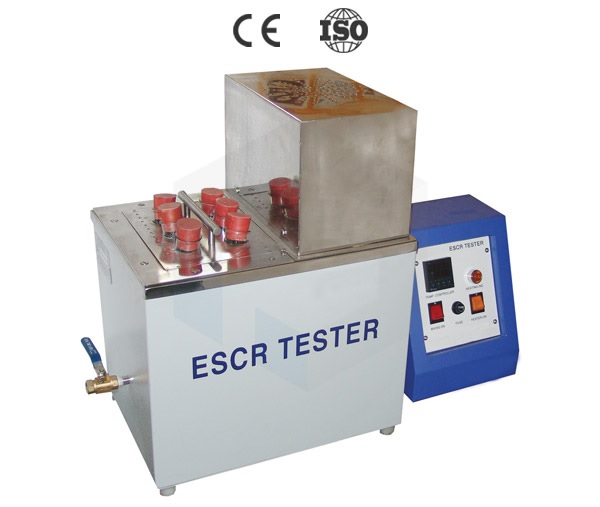Plastic is considered as one of the most durable forms of packing, but on the other hand, it has properties that might easily get affected with temperature and environmental stress. Plastics can be easily moulded into any shape. What important here is to note if it the shape would survive when subjected to real life working conditions? After testing the flexibility of the sample, the feasibility is tested with ESCR tester, Environmental Stress Cracking Resistance tester.
In this test, a stripped shape sample is taken and subjected to indirect heating, with water as a medium. The behaviour of the sample is investigated in this condition.
Testing Procedure
Firstly, the sample is cut into a strip and punctured from the centre. Then, the strip is folded from this punctured point and placed inside a fixture. An ESCR tester is comprised of a heating unit having 6 cavities to test up to 6 samples. In these cavities or station, 6 test tubes can be placed in water. This water bath is equipped with a stirrer.
The sample holder is placed inside the test and locked with cork. This test tube is placed inside the water bath and leaves to rest for certain time. Once the test is over, the samples are taken out and inspected visually. The focus area here would remain the punctured area. Noteworthy thing here is if punctured area expands after hot water bath or cracked from the point or remain unaffected. Also, any potential colour bleeding can be observed.
The bathing medium can be varied here, it can be water, silicon oil which is suitable for taking the temperature range to as high as 250°C. Stirrer plays an important role in maintaining the uniformity of temperature through the liquid chamber. The inside chamber is made up of stainless steel to protect the ESCR tester from potential corrosion.
This equipment is designed in compliance with ASTM D 1693 to study the environmental attacks on the plastic containers made using blow moulding technique. When filled with a different form of liquids like detergent, soap, oil, cleaning agents, these packings may experience failure due to constant stress. Similar conditions are replicated in the lab to take appropriate measure before starting the mass production. This also helps in identifying the manufacturing defects and rectifying the manufacturing line accordingly.
This machine comes with multiple accessories important to perform the test.
- Nicking jig to hold the sample
- Borosil test tubes to hold the nicking jig
- Cutting die
- Bending tool for transferring the sample
